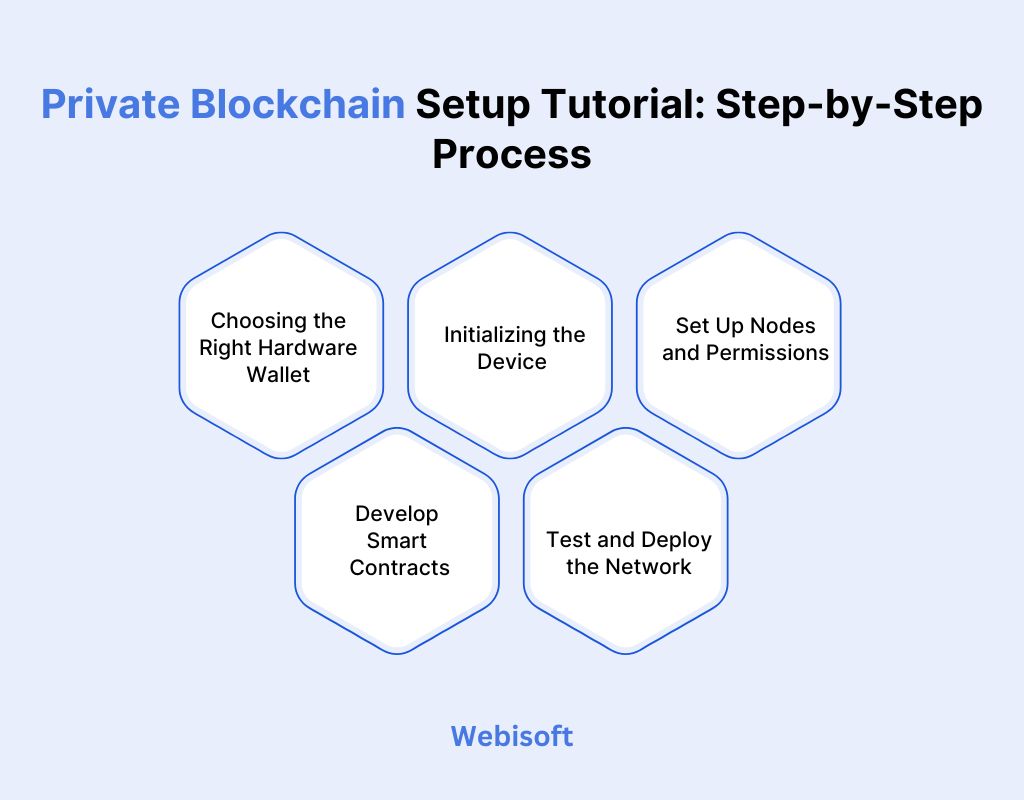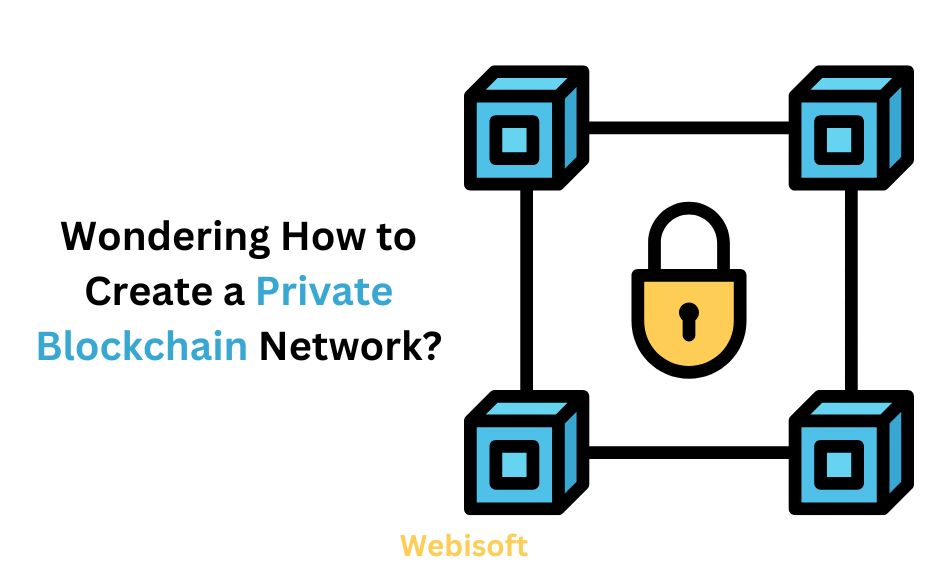Over 81% of businesses plan blockchain integration by 2025. Yet, many fail due to complex private network setups. Can you afford these costly mistakes?
Burning question arises, how to create a private blockchain network to avoid costly errors? It starts with understanding setup phases, expert tips, and security practices.
This guide walks you through every step, from learning setup tutorials to smart contract development for building a scalable private blockchain network.
Contents
- 1 What is a Private Blockchain Network?
- 2 Private Blockchain Setup Tutorial: Step-by-Step Process
- 3 5 Reasons Why Hyperledger Fabric Private Blockchain Is A Popular Choice?
- 4 Private Blockchain Security and Business Benefits!
- 5 Private Blockchain vs. Public Blockchain: Key Differences
- 6 Final Verdict
- 7 Frequently Asked Questions
What is a Private Blockchain Network?
A private blockchain is a distributed ledger where access is limited to approved participants. It allows selected members to record, validate, and access transactions.
For example, a supply chain company may use a private blockchain to track goods. Only suppliers, manufacturers, and retailers can access and update shipment records.
Creating a private blockchain is important because it protects sensitive data while offering full control over the network. It ensures privacy, improves transaction speed, and supports regulatory compliance.
Private Blockchain Setup Tutorial: Step-by-Step Process

Curious how experts create private blockchains? Let’s break down each step clearly.
Step 1: Choose the Right Blockchain Platform
You should start by picking the right platform. Options like Hyperledger Fabric, Corda, or Quorum work well. For instance, if you handle financial transactions, Hyperledger gives you permissioned features and better control.
Step 2: Set Up Nodes and Permissions
Next, set up the nodes and decide who gets access. Define clear permissions for every user. For example, in a healthcare network, you may allow only hospitals and labs to view or update patient records.
Step 3: Select a Consensus Mechanism
Now, pick the right consensus method to validate transactions. You can choose PBFT or Proof of Authority for speed and security. Suppose you run a logistics network, PBFT helps verify transactions faster between your partners.
Step 4: Develop Smart Contracts
Write smart contracts to automate tasks and reduce manual work. Use languages like Solidity or Go. For example, you can set a contract that releases payments automatically when goods reach their destination.
Step 5: Test and Deploy the Network
Finally, test your entire blockchain to catch issues early. Simulate real scenarios to see if smart contracts and transactions run smoothly. Once ready, you can deploy your private blockchain with confidence.
5 Reasons Why Hyperledger Fabric Private Blockchain Is A Popular Choice?
Hyperledger Fabric offers modular architecture, making it ideal for enterprise-grade solutions.
- Strict Access Control: You get permissioned networks with strict access control, ensuring better data security.
- Modular Design Flexibility: Its modular design lets you customize components based on your project needs.
- High Scalability: Hyperledger supports high scalability, handling large volumes of transactions smoothly.
- Private Channels: It allows private channels, so sensitive data stays visible only to selected members.
- Industry Trust: Many industries trust it, from supply chains to healthcare and financial services.
Private Blockchain Security and Business Benefits!
Ignoring security invites major risks. Private blockchains need strong defenses.
You should use multi-factor authentication, data encryption, and role-based access controls. Regular audits detect flaws early. Besides, updating systems frequently blocks new threats. Following these practices secures sensitive data and maintains trust.
Along with security, private blockchains offer strong privacy, faster speeds, and cost-effective operations. They reduce transaction times and improve efficiency by eliminating middlemen.
Besides, you gain full control over data, making compliance easier. Such benefits make private blockchains a preferred choice across industries.
Private Blockchain vs. Public Blockchain: Key Differences
Private and public blockchains differ mainly in access control, speed, and privacy.
A private blockchain restricts access to approved users, allowing greater data privacy and control. It operates faster due to fewer participants and is suitable for businesses needing security.
In contrast, a public blockchain is open to anyone. It ensures transparency but offers limited control and slower performance due to large user participation.
| Features | Private Blockchain | Public Blockchain |
| Access | Restricted | Open to all |
| Speed | Faster | Slower |
| Scalability | High | Limited |
| Data Privacy | Strong | Weak |
| Governance | Centralized | Decentralized |
Final Verdict
Building a private blockchain network takes careful planning, expert guidance, and solid security practices.
You now understand the differences between public and private blockchains, setup steps, and why choosing the right platform matters. You also explored the power of smart contracts and security measures.
By focusing on proven platforms like Hyperledger, you ensure your network remains scalable, secure, and ready for real-world applications. A well-built private blockchain helps you control sensitive data, speed up transactions, and gain a competitive edge.
Frequently Asked Questions
How long does it take to build a private blockchain?
It usually takes 3 to 6 months based on complexity, features, and resources. Careful planning, expert development, and thorough testing help avoid costly delays and ensure smooth deployment.
Is Hyperledger the best platform for private blockchains?
Yes, Hyperledger is widely preferred for private blockchains. Its modular architecture, strong security, and support for private channels make it ideal for industries needing data privacy, flexibility, and large-scale transactions.
What’s the costliest mistake in private blockchain development?
Neglecting security is the biggest mistake. Weak encryption, poor access control, and skipping audits can lead to data breaches. Always prioritize robust security strategies from the beginning to protect sensitive information.
